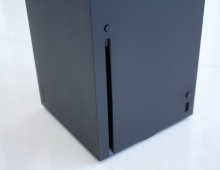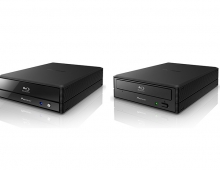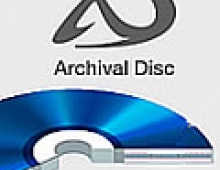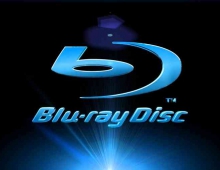
Sony And Panasonic Create New "Archival Disc" 300GB Optical Disc Standard
Sony and Panasonic have formulated "Archival Disc", a new standard for professional-use optical discs for long-term digital data storage.
The Archival Disc specifications include a 300 GB write-once disc with three recording layers in each of its sides (double-sided). A blue laser (Wavelength 405 nm) technology is used to read/write on the disc (Land & Groove recording format), with lens with a numerical aperture (NA) of 0.85 - the same lens used by Professional Disc for DATA systems made by Sony many uears ago.
Crosstalk cancellation and high-order Partial Response Maximum Likelihood (PRML) signal processing technologies have been employed to achieve both larger capacity and higher playback signal quality.
Crosstalk cancellation is a technology that electrically removes crosstalk from the adjacent tracks that increase as the track pitch becomes narrower, to achieve high-quality playback performance.
PRML is a signal processing technology that improves reproduction performance by allowing inter-symbol interference. It has been also used in the Blu-ray disc format.
In addition, the Reed-Solomon Code is used for essential Error correction.
Sony and Panasonic plans to launch systems with a recording capacity of 300 GB per disc from summer 2015. In addition, both companies plan to leverage their respective technologies to further expand the recording capacity per disc to 500 GB and 1 TB. To achive a 500GB capacity, the companies plan to use High Linear Density (Intersymbol Interference Cancellation technology) for signal processing. Moving on, the 1TB is daid to use a Multi Level Recording technology, plans that bring us memories from many years ago when Calimetrics had ambitions to apply that revolutional technology to discs, but had failed to commercialize it.
Optical discs have great properties to protect themselves against the environment, such as dust-resistance and water-resistance, and can also withstand changes in temperature and humidity when stored. This makes them robust media for long-term storage of content.
Crosstalk cancellation and high-order Partial Response Maximum Likelihood (PRML) signal processing technologies have been employed to achieve both larger capacity and higher playback signal quality.
Crosstalk cancellation is a technology that electrically removes crosstalk from the adjacent tracks that increase as the track pitch becomes narrower, to achieve high-quality playback performance.
PRML is a signal processing technology that improves reproduction performance by allowing inter-symbol interference. It has been also used in the Blu-ray disc format.
In addition, the Reed-Solomon Code is used for essential Error correction.
Sony and Panasonic plans to launch systems with a recording capacity of 300 GB per disc from summer 2015. In addition, both companies plan to leverage their respective technologies to further expand the recording capacity per disc to 500 GB and 1 TB. To achive a 500GB capacity, the companies plan to use High Linear Density (Intersymbol Interference Cancellation technology) for signal processing. Moving on, the 1TB is daid to use a Multi Level Recording technology, plans that bring us memories from many years ago when Calimetrics had ambitions to apply that revolutional technology to discs, but had failed to commercialize it.
Optical discs have great properties to protect themselves against the environment, such as dust-resistance and water-resistance, and can also withstand changes in temperature and humidity when stored. This makes them robust media for long-term storage of content.
Key Archival Disc specifications
| Disc size (type) | 300 GB (write-once) |
|---|---|
| Optical parameter | Wavelength = 405 nm (nanometers), Numerical Aperture NA=0.85 |
| Disc structure | Double-sided Disc (3 layers/side), Land and Groove Format |
| Track pitch | 0.225µm (micrometers) |
| Data bit length | 79.5nm (nanometers) |
| Error correction method | Reed-Solomon Code |





















